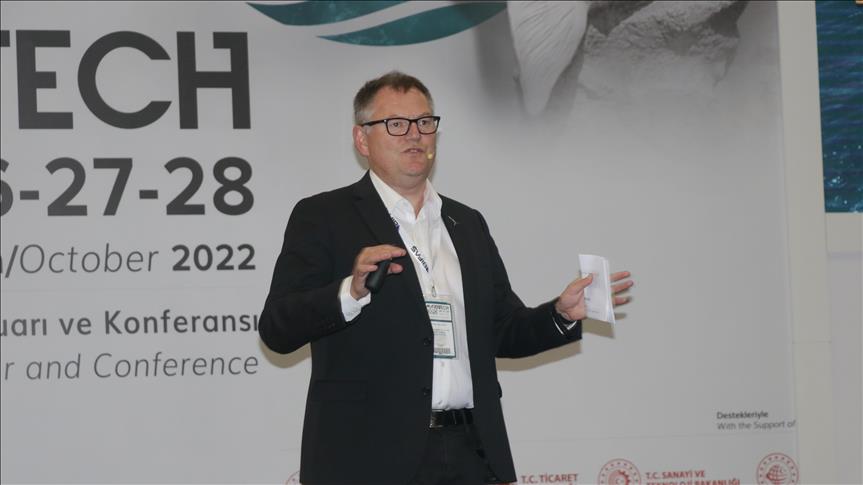The offshore wind investments in Northern Europe is expected to be higher than the investments in oil and gas after 2022, according to Frank Emil Moen, the CEO of Norway’s Energy Innovation.
In an exclusive interview with Anadolu Agency on the sidelines of MARENTECH offshore wind conference in Izmir last week, Türkiye’s wind capital, Moen said that global offshore wind capacity has grown by more than 30% every year for the past 10 years.
The current global capacity of approximately 42 gigawatts (GW) is expected to reach 200-230 GW already by 2030, he said.
Norway, a global leader in offshore wind, targets the installment of 2,015 turbines, which would generate 30 GW of offshore wind by 2040, although the number could change depending on the turbine capacity.
He projects that in Northern Europe, offshore wind investments after 2022 are poised to be higher than oil and gas investments this year.
However, in relation to the country’s future offshore wind leasing, Moen outlined the standards that prospective enterprises must be aware of in order to demonstrate their capacity to provide national value.
He cited the example of a California lease for offshore wind in which the companies need to show from an early phase that 20% of the total value of the bid is to be spent on either workforce development, or supply chain development, or a combination of both.
He explained that this means, in effect, that energy companies will not merely partake in an auction-based leasing but need to demonstrate criteria-based credits with involvement in the entire supply chain.
The scope of this work could range from setting up or aid in building the workforce, helping out building schools and colleges to develop programs for the different levels or competencies that are needed from blue collar workers undertaking the installations and operations and maintenance work, as well as the engineering and planning for R&D activities.
The business-to-business meetings as part of the conference offered a big opportunity to meet with possible partners in the Türkiye’s supply chain, although the country is only starting on its journey in offshore wind, Moen noted.
Norway’s Energy Innovation has been actively involved in the establishment and development of Norwegian Offshore Wind – an innovation cluster with more than 360 member companies.
Satellite data of Türkiye offshore wind potential is not yet detailed enough but current estimations show that the best offshore resources for the Black Sea are located on the west side, while bottom-fixed turbines are not suitable for the region.
However, data for the Aegean Sea is more promising, with good wave conditions that would be commensurate with a system combining wave and wind to the west of the region.
– Collective ambition including Türkiye is 10 gigawatts
Last week in a speech during the MARENTECH conference, Giles Dickson, CEO of WindEurope, Europe’s voice for wind energy, outlined the benefits of this energy source, citing lower installation costs, the best use of local natural resources, less reliance on imported fossil fuels, and the potential for economic growth by generating €15 million in economic activity and job creation.
To date, 77,000 are employed in the industry but a target for 2030 has been set to employ 200,000.
Floating offshore wind is the key driver for sector growth in the Mediterranean and the Black Sea, with a goal to have at least 300 megawatts in floating sea basins by 2023 in Europe.
Türkiye is now joining other countries like Norway, UK, Greece and Italy to ramp up generation. The collective ambition in Europe and Türkiye is 10 gigawatts of installed capacity for floating offshore wind by 2030, according to Dickson.

